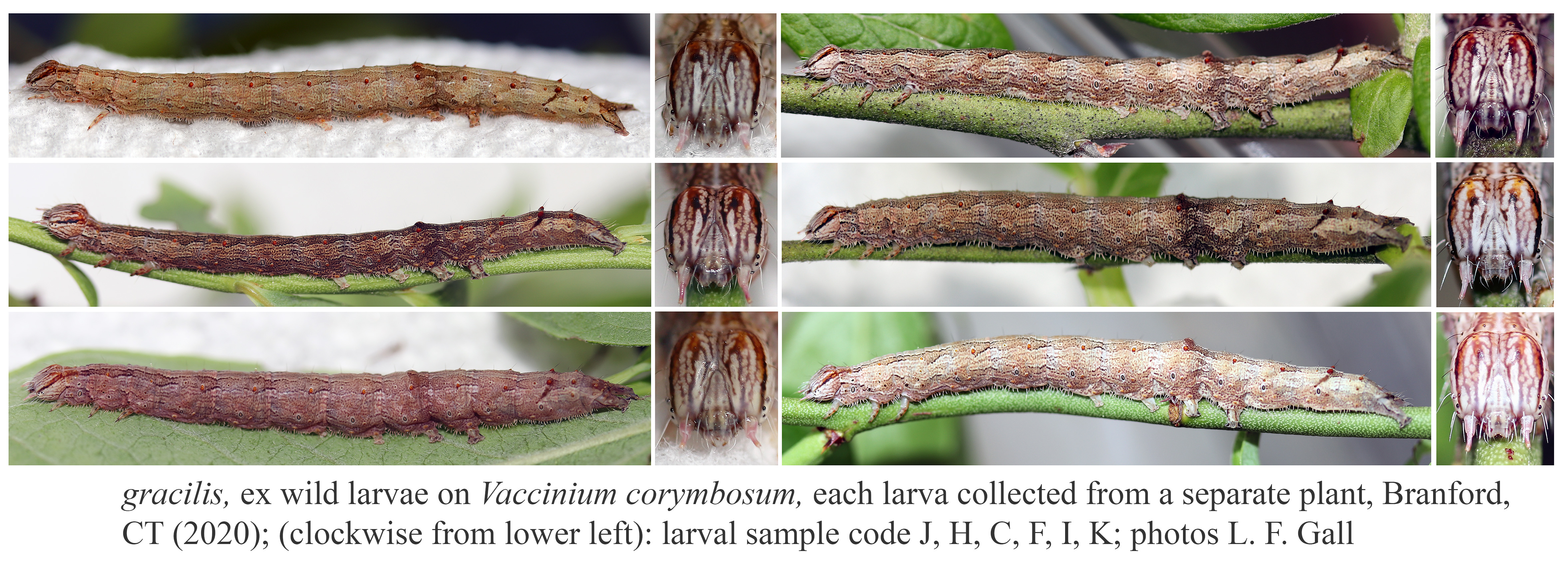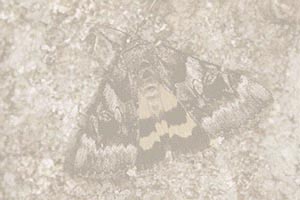 Catocala gracilis
Catocala gracilis
W. H. Edwards, 1864
Both gracilis and sordida
sport similar larvae and can be regularly found on blueberries, although usually not as often as the related
andromedae
which tends to be far less brown and with more pervasive striping and stippling
throughout.
Larvae of
gracilis
have many medium-lengthed lateral filaments, and usually have rather
pronounced spots on the head capsule face below the vertex; in larvae of
sordida the
filaments are either essentially absent or are reduced in number and length (but a minority of individuals
overlap gracilis), and the head capsule face is usually not spotted.
Various species of Vaccinium are the typical foodplants for both gracilis and sordida
(Eubotrys and Leucothoe recorded for gracilis rarely). In western and southern Connecticut,
all our larval records for gracilis are from Highbush Blueberry Vaccininum corymbosum, whereas all larval records
for sordida are from Lowbush Blueberries Vaccinium angustifolium and Vaccinium pallidum
(sordida females have been observed ovipositing in the field on Vaccinium pallidum).
Both gracilis and
louiseae
are present and overlap in Florida, but the larva of the latter is like andromedae;
the larva of the related
bastropi
is unknown.


|


